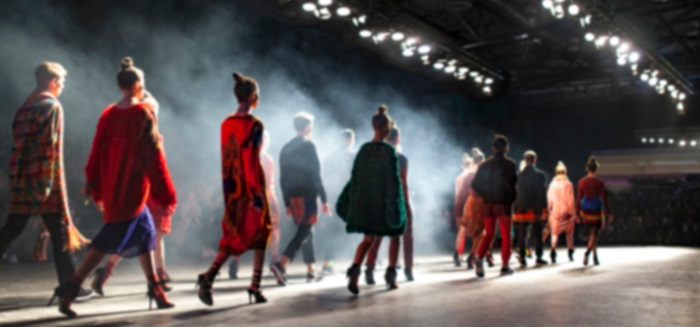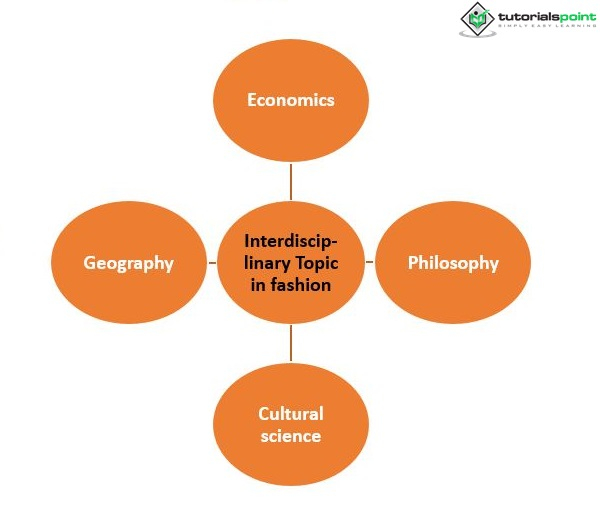

This article offers an interdisciplinary approach to fashion theory. This study’s central claim is that the relationship between relationships, cultural practises, institutions, and production structures may be seen in the way that fashion demonstrates these relationships over time.

Along with highlighting instances of opposition, conformity, distinction, and symbolic resistance, the social meanings of the “things of culture” are continuously renegotiated in their relationships with one another and with the setting. They convey changes in societal structure, which are clearly visible in the fashion industry. Because fashion theories are still fragmented, social scientists would need to collaborate in order to fully understand the intricacies of fashion.
In order to understand various fashion ideas and the cultural relevance of self-fashioning, which includes not only clothing but also physical changes like tattoos and piercings, the article emphasises the significance of an “interdisciplinary approach” in the field of fashion. In addition to reflecting far deeper and more organised social transformations and occurrences, fashion serves as a complement. It examines particular anthropological and psychosocial theories seen as important to the growth of fashion studies.
Following are the major topics, which are related to fashion −
Fashion is frequently viewed as the antithesis of reason in the field of economics. Economists generally agree that fashion is nystrom claimed that it is comparable to “a philosophy of futility,” for lack of a better term. Veblen claimed that clothing, especially women’s clothing, is simply a reflection of the wealth of the family’s head who is wearing it. But this criticism of fashion was not only formulated by classical economists; it is also a common issue among more modern academics who speculate about scenarios in which consumers might be better off “by outlawing the use of fashion.”
Not only do economists criticise fashion, but some of them are downright cynical. The modelling of fashion phenomena by economists can be helpful to sociologists who are interested in fashion as a diffusion mechanism, even though economists, just like philosophers, frequently perceive fashion as being immoral, superficial, or irrational—a view that some sociologists may find unsatisfactory due to their expectation of value neutrality from social scientists.
Before adam smith turned his attention to the actual philosophical mechanisms of fashion, where he saw the outcome of an imitation process rooted in what he called “sympathy,” a feeling through which individuals relate to others, the philosophical debate on fashion—often confused with luxury—was almost exclusively on moral questions. Smith suggested that everyone might share in the grandeur and delight of the wealthy by copying their fashion choices.
Philosophers have also talked about how the idea of fashion might be used to describe social processes other than clothing and dress. In conclusion, despite the fact that philosophy is frequently mired in a “fear of fashion” and a disapproving moral assessment of this social phenomenon, it is a helpful starting point for sociologists of fashion since it offers important pathways for defining the idea.

Through a number of shared concepts and references, cultural studies and sociology are historically and intellectually intertwined. However, today, they are two separate academic disciplines with their own traditions and institutions. Cultural studies’ interest in fashion is diverse and frequently overlaps with sociology’s. Below is a summary of the various topics included in the cultural studies of fashion, including ethnicity, class, gender, sexuality, and the body. Fashion’s ambiguity and ambivalence are major issues in cultural studies of fashion, particularly as viewed from a feminist viewpoint.
In cultural studies, the issue of globalisation and the role that fashion plays in it are also crucial. Consider the idea that fashion is primarily an urban phenomenon. The question of whether globalisation leads to a standardisation of dress customs worldwide and how “national fabrics” perform in this setting is another crucial issue examined in the context of globalisation. Finally, we may assert that fashion research topics in cultural studies and sociology can definitely be combined. Sociology may benefit cultural studies of fashion by paying attention to structure in addition to culture; therefore, fashion is an excellent place to investigate the culture/structure paradox.
The worldwide production of fashion, the dissemination of knowledge, the characteristics of industrial areas, and the advancement of low-cost nations’ positions in the fashion value or commodity chain are the main topics of economic geography. Consumption has only been lightly studied by geographers.
In this subject, fundamental geographic notions like locality and concentration have been combined with sociological concepts like networks and corporate economic concepts like branding. Geographers’ interest in fashion must be understood in the context of their focus on the spatial clustering of numerous cultural enterprises. The idea of a fashion brand is relatively new in economic geography, and it is a key outcome of the interaction between producers and consumers.
The geography literature has added to our understanding of how clothing is made and connected local consumption to global markets and global industrial networks. This information, which sheds light on the geographical organisation of fashion, can easily be coupled with sociological and cultural studies; in fact, economic geography and economic sociology have frequently been productively combined in research.
In conclusion, “fashion studies” departments and specialised academic journals like fashion theory, published since 1997 and edited by valerie steele, and critical studies in fashion and beauty, published since 2010 and edited by efrat tseelon, diana crane, and susan kaiser, have only recently begun to appear. For a long time, fashion as a social phenomenon had no particular disciplinary home.
The most important sociologically pertinent findings about fashion from other disciplines, their limitations, and the degree to which a sociological approach to fashion can and needs to distinguish itself from developments in other disciplines due to the current interdisciplinary focus of fashion research have been highlighted here. We can debate certain research topics in the examination of fashion and its connection to young subcultures, beginning with the premise put forward in the findings, which views fashion as a tool for developing one’s personality and acclimating to a new social role.